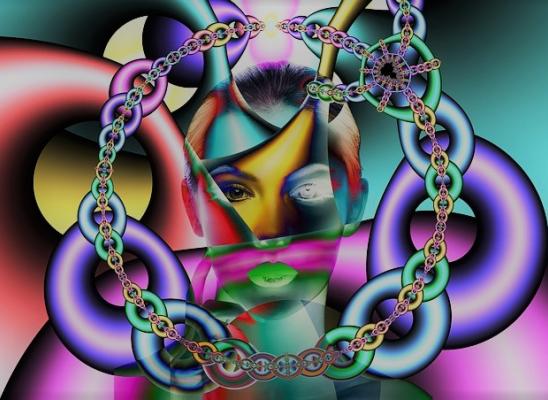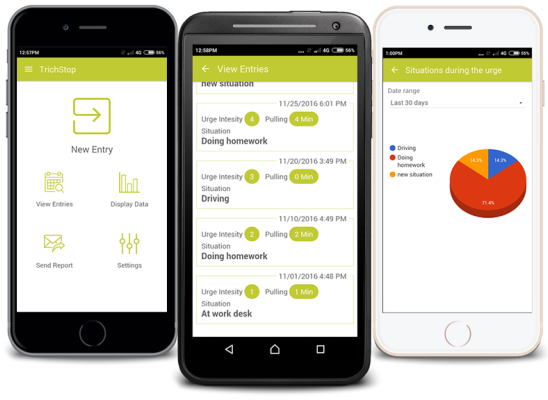I Think I Have Hair Pulling Disorder! A Guide for Healthy Next Steps

Online test
Find out the severity of your symptoms with this free online test
If you find yourself pulling your hair from your scalp, eyebrows, or other areas of the body, it can leave you feeling confused, frustrated, and maybe even ashamed. Maybe it’s a new behavior. Maybe you’ve been doing it for years. You might even find yourself pulling your hair out and not even realizing it until you see the pile of hair. You’re probably wondering what’s happening and why. And, more importantly, is there something you can do?
The first thing to do is, don’t panic. Hair pulling is not uncommon and, it has a name: trichotillomania.
Trichotillomania, aka “trich” or hair pulling disorder, is a body-focused repetitive behavior (BFRB) characterized by repetitively pulling out one’s hair, usually on the scalp, resulting in noticeable loss of hair and bald patches. Some people may pull from other places on their bodies such as the eyebrows, eyelashes, or even their pubic hair. This behavior can result in significant emotional distress and impaired psychosocial functioning. While it sounds intimidating, the fact is that despite its challenges, hair pulling is manageable, and recovery is possible.
If you suspect you have trich, you’ve already taken a powerful first step: acknowledging that the behavior is present and bothersome to you. What’s next? This guide offers suggestions for compassionate, practical steps to help you move towards understanding and learning to manage your hair pulling.
Step 1: Recognize That You’re Not Alone
One of the most commonly expressed and isolating feelings about hair pulling is the belief that you’re the only one who struggles with it. In fact, hair pulling is more common than you might think. It affects an estimated 2.0% of the population (although it’s though that number may be higher due to underreporting). That’s literally millions of people!
Step 2: Learn About Trichotillomania
Learning about trich can demystify and remove the stigma of the disorder. It is not a reflection of who you are. Understanding why you pull your hair can reduce shame and increase self-compassion.
Key Facts to Know About Trich:
- Triggers – Bouts of hair pulling can be triggered by things like stress, boredom, emotional distress, even sensations like hair texture. What triggers your hair pulling may be different from what triggers someone else.
- Hair pulling is not a bad habit - While not completely understood, compulsive hair pulling is thought to be a way to deal with distressing emotions. It is not simply a “bad habit” and most people can’t “just stop”.
- Causes – Just what causes trich isn’t entirely clear but it’s thought to be influenced by a combination of genetic, neurological, and environmental factors.
- Hair pulling is cyclical - Many people experience an urge, act on it, feel relief, and later regret, shame, or distress, perpetuating the cycle.
- Trich is a recognized mental health disorder. It is not a reflection of your character or willpower.
- Trich often co-occurs with other mental health disorders including anxiety, OCD, or depression.
Understanding the “why” behind your hair pulling can be empowering, helping you to shift away from self-blame and toward seeking support.
Seek out reliable resources. When you’re armed with facts, you are in a strong position to make sound choices regarding your options.
Step 3: Reflect on Your Behavior
The experience of hair pulling is heterogenous, meaning not everyone experiences it in the exact same way. How you experience it can yield information that will be helpful as you make decisions about managing your disorder.
Take time to observe your pulling behaviors without judgement and with curiosity. What is your experience like?
Consider questions like these:
- When do I usually pull my hair? (e.g., when I’m stressed, before bed, while watching TV)
- Do I experience specific emotions or thoughts that precede or follow pulling episodes?
- Are there specific tools or situations that encourage your hair pulling? (e.g., tweezers on the bathroom counter, boredom, certain social situations)
One way to explore your hair pulling is to keep a journal. Journaling can help you keep track of pulling episodes, reveal patterns, and identify potential triggers. This information is invaluable for choosing strategies for managing your pulling.
Step 4: Seek Professional Help
While trich is considered a chronic disorder, there are effective treatment approaches and strategies for managing the disorder.
Therapy
While self-help is valuable, connecting with a mental health professional who is skilled in treating BFRBs like trich can offer more individualized support. Remember, when speaking to your therapist, it’s important to be honest about your experiences and feelings. It’s a safe space to explore what’s happening.
Of the behavioral therapies, Habit Reversal Training (HRT) has perhaps been studied the most extensively and there is ample support in the literature and anecdotally for its effectiveness in treating BFRBs. There is also substantial evidence that combining HRT with other therapies such as acceptance and commitment therapy (ACT) and cognitive behavioral therapy (CBT) seems to support significant reduction in symptoms of both hair pulling and dysfunctional cognition, and improved psychosocial functioning.
Medication
Currently, there is no medication that is approved specifically for treating trich. However, there is some evidence that medications like SSRIs (selective serotonin reuptake inhibitors) may help reduce underlying anxiety or compulsions that contribute to hair pulling.
Step 5: Practice Self-Compassion
It’s easy to feel frustrated or ashamed about your hair pulling, but self-compassion is a vital part of healing. Remember that your hair pulling is not your fault. Trich is a complex condition influenced by biology, environment, and stress.
Celebrate small victories, like noticing an urge to pull without acting on it or seeking information about trich. Progress may be slow, but every step counts.
Step 6: Build a Support System
Sharing your experiences with others can reduce feelings of isolation and may even help you discover new strategies for dealing with your hair pulling. Choose people who are nonjudgmental and empathetic. You don’t have to overshare—simply explaining that you’re working through a behavior and need their support is enough sometimes.
Aside from supportive family and friends, support groups can connect you with others who understand your experiences. Sharing stories and strategies can foster a sense of belonging and hope. Online forums and social media communities may also provide safe spaces to connect with others living with trich.
Step 7: Progress Over Perfection
Remember that healing is a journey. Each small step builds momentum toward lasting change. Setbacks are a natural part of the recovery process.
Set realistic goals and don’t forget to celebrate those small victories.
The Takeaway
By taking proactive steps and seeking help, you’re strengthening your resiliency and your ability to manage your hair pulling in healthy ways. Remember, you are not alone in this journey and you can find ways to manage your hair pulling in healthy ways. Take it one step at a time.
References
1. Grant J. E. (2019). Trichotillomania (hair pulling disorder). Indian journal of psychiatry, 61(Suppl 1), S136–S139. https://doi.org/10.4103/psychiatry.IndianJPsychiatry_529_18
2. What is hair pulling or trichotillomania? (2024, December 10). TLC Foundation for Body-Focused Repetitive Behaviors | BFRB. https://www.bfrb.org/faqs/diagnosis-treatment-what-is-hair-pulling-or-trichotillomania?campaignid=21111672237&adgroupid=160246577179&adid=694222089519&gad_source=1&gclid=Cj0KCQiAu8W6BhC-ARIsACEQoDCYvzB_KUSueZAzbj6BUonL3e4hc7Z5FZ82ufSsRM0YGVclHUoCIRMaAp5BEALw_wcB
3. Jones, G., Keuthen, N., & Greenberg, E. (2018). Assessment and treatment of trichotillomania (hair pulling disorder) and excoriation (skin picking) disorder. Clinics in Dermatology, 36(6), 728-736. https://doi.org/10.1016/j.clindermatol.2018.08.008
Online test
Find out the severity of your symptoms with this free online test
Start your journey with TrichStop
Take control of your life and find freedom from hair pulling through professional therapy and evidence-based behavioral techniques.
Start Now



